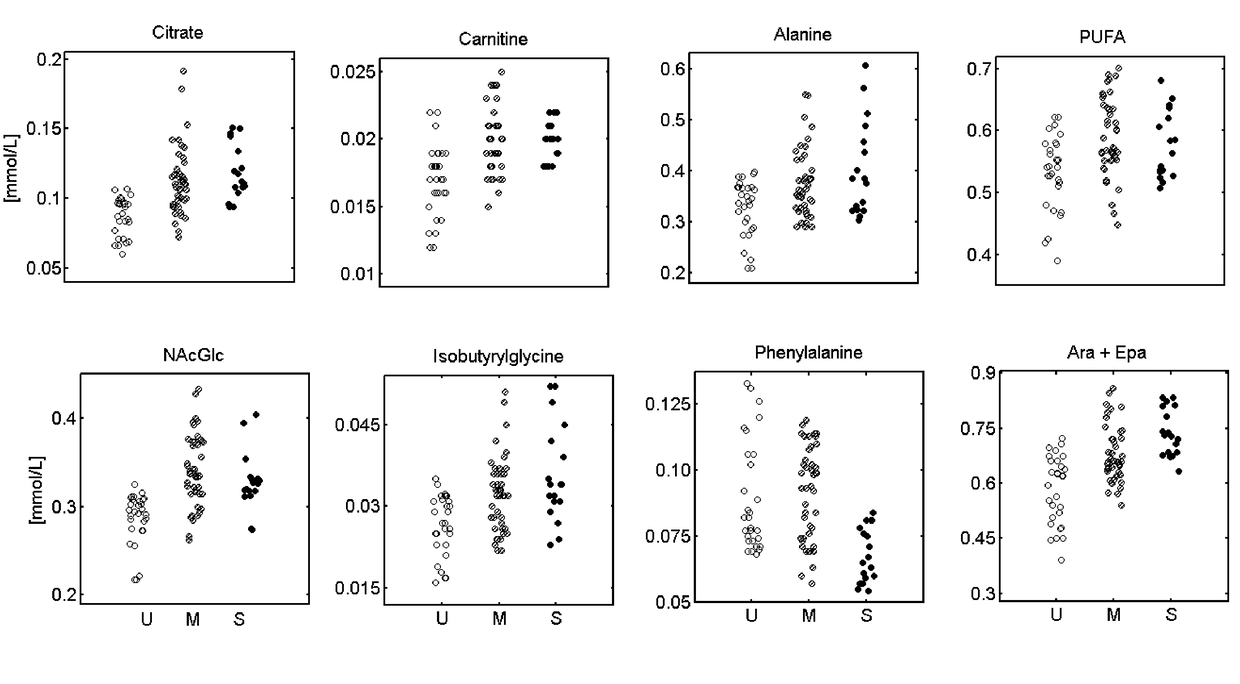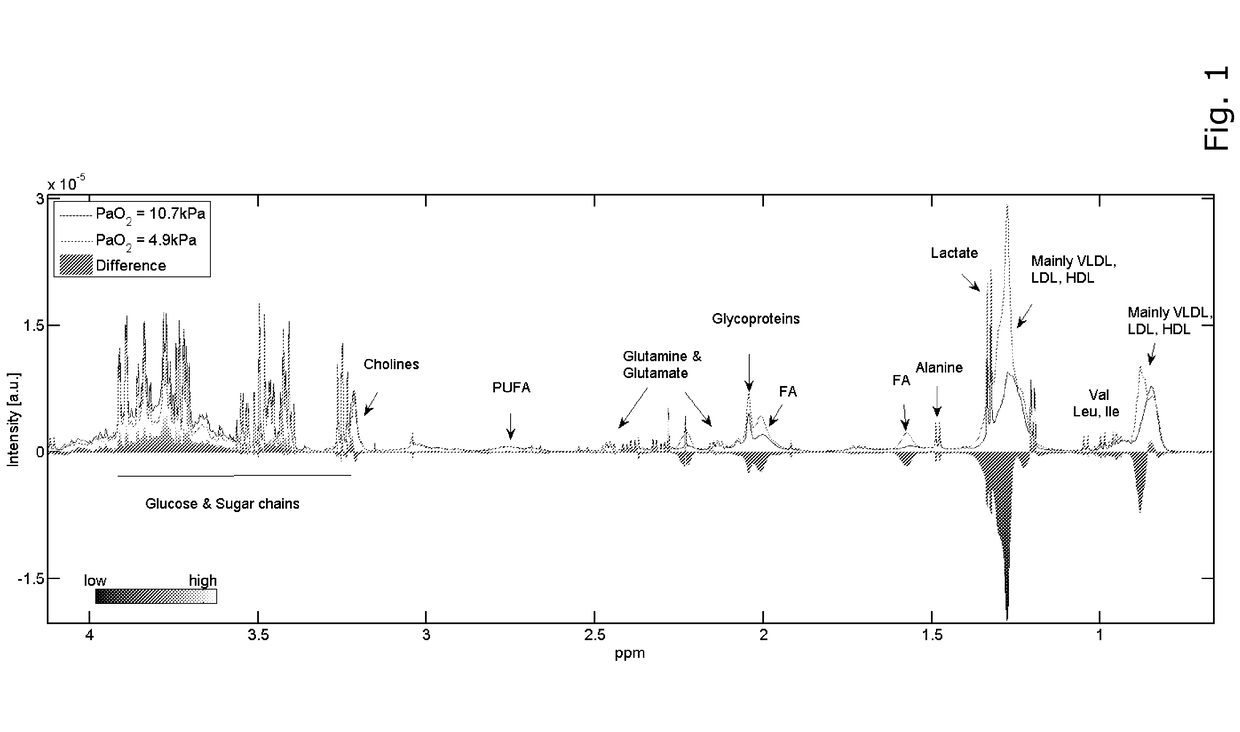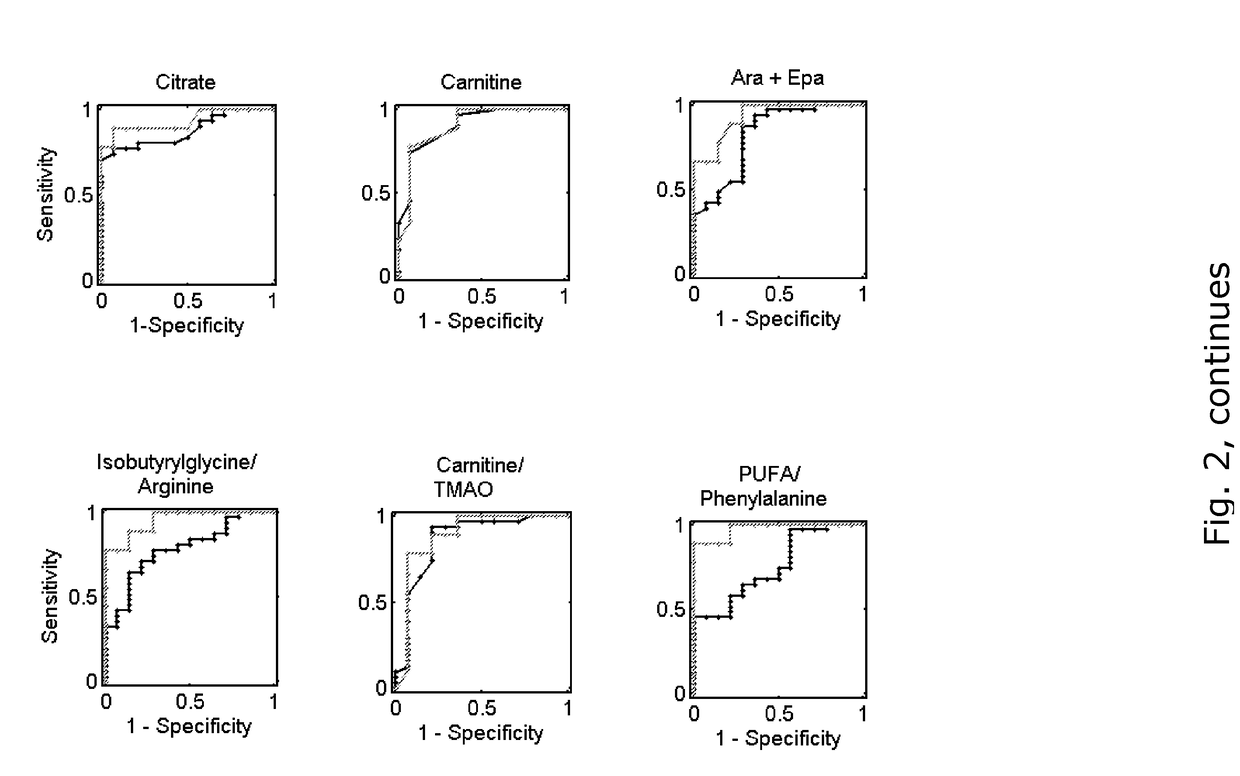Biomarkers for prediction of development of hypoxemia due to acute lung injury
a technology of acute lung injury and biomarkers, which is applied in the direction of biological material analysis, instruments, material analysis, etc., can solve the problems of life-threatening condition, abnormal gas exchange, and no therapeutic intervention has proven useful in preventing disease progression
- Summary
- Abstract
- Description
- Claims
- Application Information
AI Technical Summary
Benefits of technology
Problems solved by technology
Method used
Image
Examples
example 1
Methods Employed for Identifying Biomarkers, which are Early Biomarkers for the Development of Hypoxemia
Patient Group and Clinical Outcome
[0148]Serum samples were obtained from forty-seven (n=47) patients undergoing coronary artery bypass grafting (CABG). Three days postoperatively, 15 patients showed no signs of hypoxemia; while 32 developed hypoxemia with PaO2 below normal values.
Samples Preparation
[0149]To avoid preanalytical bias due to sample collection, all blood samples were collected and prepared by the same person. Blood samples were obtained from both the left atrium (LA) and pulmonary artery (PA) precisely 16 h after weaning from the CPB circuit. To obtain serum samples, blood was allowed to clot at room temperature for 30 minutes, and was subsequently centrifuged at 3000 rpm for 10 minutes. Aliquots of LA and PA serum were immediately stored at −80° C. until assayed.
Sample Preparation for NMR
[0150]Prior to NMR measurements, samples were thawed for 2 h at 4° C., vortexed,...
example 2
Metabolome Screening Reveals Early Signs of Disease:
[0161]The systemic and pulmonary phenotypes were monitored by 1H Nuclear Magnetic Resonance (NMR) spectroscopy. A typical one-dimensional (1D) serum NMR spectrum is characterized by broad resonances from lipids and glycoproteins, and narrow resonances from glucose, lactate, and citrate, among others. Spectra of two samples collected on the first postoperative day (exactly 16 h after weaning from CPB), one from a patient showing no signs of hypoxemia (PaO2=10.7 kPa or 80.2 mmHg), and one from a patient developing hypoxemia (PaO2=4.9 kPa or 36.7 mmHg), reveal differences in several signals, of which lipids are the most significant (FIG. 1).
[0162]Since the metabolome mirrors environmental changes, we hypothesized that the disease could be reflected at the metabolic levels on the first day postoperatively. Therefore, we screened for possible associations between the metabolome and the hypoxemic scores (PaO2) used in diagnosis. We have ...
example 3
[0163]The metabolic fingerprints found in the screening test were investigated further. 64 different metabolites were analysed, of which one could not be identified (U (5.10-5.08 ppm)). Perturbations in the levels of metabolites involved in normal cellular functioning (amino acids, carbohydrates, ketones), cellular signalling (1,2-diacylglycerol), inflammation (arachidonic and eicosapentanoic acid), cell membrane and alveolar surfactant components (fatty acids, cholesterols, phospholipids) were found crucial in the development of injury. Carnitine, arachidonic and eicosapentanoic acid, glycoprotein, citrate, and phenylalanine, among others, showed the highest fold changes, indicating their key roles in later outcomes. Most metabolites showed consistent trends from none-to-mild-to-severe acute lung injury (FIG. 4), indicating their correlation to the degree of later pulmonary dysfunction and their possible function as predictive biomarkers.
[0164]The list of the most relevant biomarke...
PUM
| Property | Measurement | Unit |
|---|---|---|
| time | aaaaa | aaaaa |
| time | aaaaa | aaaaa |
| time | aaaaa | aaaaa |
Abstract
Description
Claims
Application Information
 Login to View More
Login to View More - R&D
- Intellectual Property
- Life Sciences
- Materials
- Tech Scout
- Unparalleled Data Quality
- Higher Quality Content
- 60% Fewer Hallucinations
Browse by: Latest US Patents, China's latest patents, Technical Efficacy Thesaurus, Application Domain, Technology Topic, Popular Technical Reports.
© 2025 PatSnap. All rights reserved.Legal|Privacy policy|Modern Slavery Act Transparency Statement|Sitemap|About US| Contact US: help@patsnap.com



